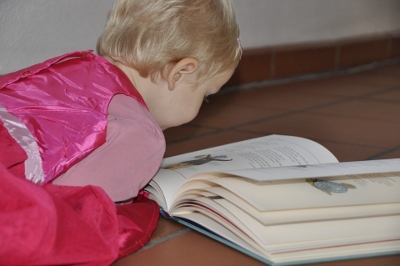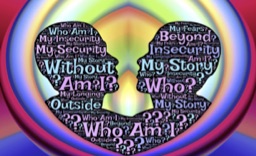|
Stories are like magic. You start telling one, and whether your
learners are children or adults, the room goes quiet and you get total
attention.
But you get more as well. Extensive research, though mainly
with native speakers, has shown that the information delivered in a
story is learned more quickly and retained longer than through any other
means, such as explanations, lectures, and even TV.
It might be easy to conclude that we retain more from stories
because stories are more interesting. However, researchers from
University of California (Graesser, Hoffman, & Clark, 1980)
found that narrative texts were read about twice as fast as expository
texts and remembered twice as well, but familiarity and interestingness
only had a very small effect. There is another reason our brains love
stories, and it has to do with the narrative format.

Stories can also be used by learners. When learners are
given lists of words to memorize, those that put the words in stories
show far better retention. How much better? They remembered from two to
seven times as many words (Higbee 1977)! Imagine if you
could get your students to remember twice as many vocabulary items, and
that was just the worst case. Indeed, stories are powerful, but are we
really taking full advantage of them in our classrooms? Many published
materials use stories, but why not rely more on our learners’ and our
own to enhance learning?
Before considering that, however, let us go back to a very old
question: Where does the power of stories come from? Neuroscience might
have found the answer. Neuroscientist Zak (2015) has been doing amazing
research on cortisol and oxytocin release caused by animated stories. He
found that touching stories cause the release of both, resulting in
greater attention, more sympathy, and changes in attitudes. Because of
oxytocin release, Zak’s (2015) subjects were more willing to give money
to strangers after hearing a touching story. He found something else
out, too. The information must be structured a particular way for these
neurotransmitters to be released, a structure we all know: the arc of
the rising action, climax, and falling action that stories are made of.
Our brains are built to respond to information presented in a highly
sensory, cause-and-effect format.

We retain information from the narrative format, where events
occur one after the other, because that is how we are wired (Widrich,
2012).
A story, if broken down into the simplest form is cause and
effect. And that is exactly how we think. We think in narratives all day
long, no matter if it is about buying groceries, whether we think about
work or our spouse at home. We make up [short] stories in our
heads for every action and conversation. (p. 1)
We see the world in affordances. So we are always predicting
the potential outcomes of ours and others’ actions. We predict that
asking something politely will get a positive reply. We estimate that we
can pass the slow person walking in front of us if we take a couple of
big steps now. Our cause-and-effect way of processing every moment is
not just a conscious act. It happens unconsciously, uncontrollably, even
when we are asleep. Basically, our brains are prediction machines.
Another factor influencing retention is that our brains are
also built to remember things that are important to us. Stories are
important because they are encapsulated experience. As Wilson (2002)
puts it, “The stories we tell ourselves and others are our survival
manuals” (p. 10). They help decode the world, exploit our environment,
and hone our social skills. Mar and Oatley (2008) reported in two
studies that individuals who frequently read fiction seem to be better
able to understand other people, empathize with them, and see the world
from their perspectives. Fiction, Mar and Oatley (2008) note,
…is a particularly useful simulation because negotiating the
social world effectively is extremely tricky, requiring us to weigh up
myriad interacting instances of cause and effect. Just as computer
simulations can help us get to grips with complex problems such as
flying a plane or forecasting the weather, so novels, stories and dramas
can help us understand the complexities of social life. (p.
42)
Part of our evolutionary success comes from the way we have
made these manuals of encapsulated experience transferrable. Hasson from
Princeton examined the brains of someone telling a story and someone
listening and found something surprising. Their brains linked up
(Widrich, 2012). When the teller “had activity in her insula, an
emotional brain region, the listeners did too. When her frontal cortex
lit up, so did theirs. By simply telling a story, the woman could plant
ideas, thoughts and emotions into the listeners’ brains” (p.
1).
So, how can we tap into the power of stories in class?
Obviously, we already are. Most of the readers used in the extensive
reading approach are stories, and I suspect that their narrative format
is one of the reasons they are so effective, a reason that has been
missed by the experts. Textbook and video materials also use narratives.
However, there are two powerful areas of using stories that
still seem underdeveloped: stories told by teachers and learners. Let me
offer a few suggestions.
As for learners sharing stories, an easy way to start is to
have them fold a piece of paper into four quadrants, label each quadrant
with a key word, such as happy, sad, funny, and scary, and then drawing a picture of a personal
experience for each. In pairs or groups, they relate these experiences. A
slightly more complex way of having learners share stories is to have
them make digitales, a method developed by Rex
Tanimoto at Osaka Gakuin University. Learners write PowerPoint stories
with one picture and one or two sentences per slide and then share them,
thereby practicing discourse, speaking, and listening skills while
having fun. Younger learners in particular seem to be adept at coming up
with amazing stories.
An important point in these two methods is that they use
pictures to support the stories. With lower level students, whose
pronunciation and expressive abilities might be weak, the pictures are
often just the scaffolding needed to make their stories comprehensible.

Whenever possible, I have students share personal stories in
writing assignments too, even when teaching expository writing. For
example, I ask students to write about an event that has changed their
life. For me, it is a way to teach the cause-and-effect organizational
mode—one paragraph each on a) what you were like before the event, b)
the event, and c) what you were like after—but for the learners, it as a
way to share profound personal experiences, often with tears.
Telling a story yourself is a great way to end a class. Whereas
textbooks surround stories with vocabulary exercises and comprehension
questions, these techniques are not really necessary or even helpful for
live storytelling. These kinds of support too often derail a more
important naturalistic focus on meaning. The most support I add is to
stop a couple of times to summarize in learners’ L1 in an EFL
environment or, simpler, slower English in an ESL one, to help the
listeners keep on track. They might also discuss the meaning of the
story after. As for the kind of stories to tell, I suggest that you keep
them short—1 to 5 minutes—and use stories with a moral message that
fits their stage of development. For example, with college students, I
avoid fairy tales and folk talks—whose moral messages are things like
“obey your parents,” or “the forest is dangerous”—and use true stories
about conflict, compassion, resilience, and love: stories that help
decode the complexities of life.
Sometimes, I tell my own stories, but I generally prefer
telling the moving stories I have found online or in books. If you find
it hard to tell a story in front of a group of people, even students,
then keep three things in mind:
-
There is no such thing as a natural storyteller. Everyone who is good at it got there through practice.
-
Reduce the processing load by using simple utterances,
avoiding digressions, and dramatizing the story with gestures and dialog
as much as possible.
-
Tell the story outside of class a few times first.
Storytellers agree that it is not until about the fifth time that they
really master the pauses, voice changes, and word choice.
So let’s take advantage of this oldest, but still state-of-the-art, tool of teaching.
References
Graesser, A. C., Hoffman, N. L., & Clark, L. F. (1980).
Structural components of reading time. Journal of Verbal
Learning and Verbal Behavior, 19(2),
135–151.
Higbee, K. L. (1977). Your memory: How it works and how to improve it. Englewood Cliffs, NJ: Prentice Hall
Mar, R. A., & Oatley, K. (2008). The function of
fiction is the abstraction and simulation of social experience. Perspectives on psychological science, 3(3), 173–192.
Widrich, L. (2012, November 29). The science of
storytelling: What listening to a story does to our brains [Blog post].
Retrieved from https://blog.bufferapp.com/science-of-storytelling-why-telling-a-story-is-the-most-powerful-way-to-activate-our-brains
Wilson, E. O. (2002). The power of story. American Educator, 26(1), 8–11.
Zak, P. J. (2015). Why inspiring stories make us react: The
neuroscience of narrative.Cerebrum, 2. Retrieved from http://www.ncbi.nlm.nih.gov/pmc/articles/PMC4445577/
Popular writer and speaker Curtis Kelly is a
professor at Kansai University in Japan. He is the founder and
coordinator of the Mind, Brain, and Education SIG of the Japan
Association for Language Teaching. |

